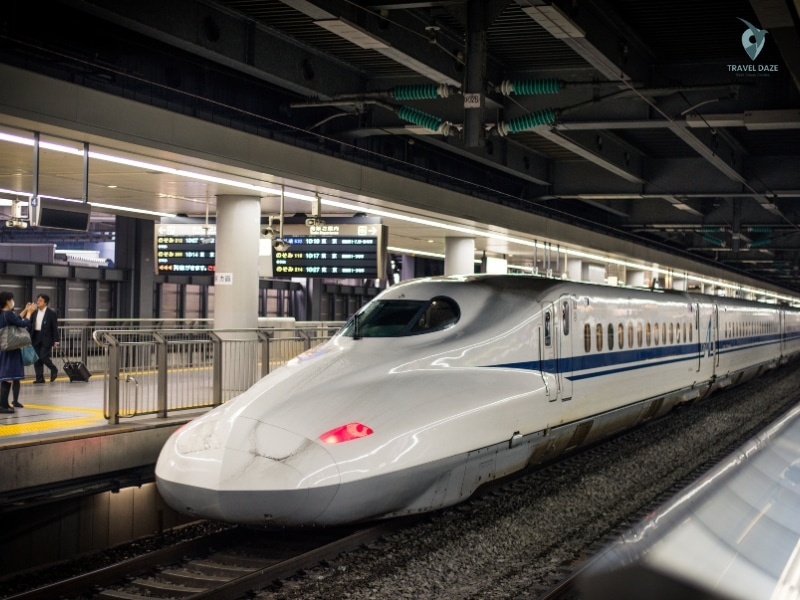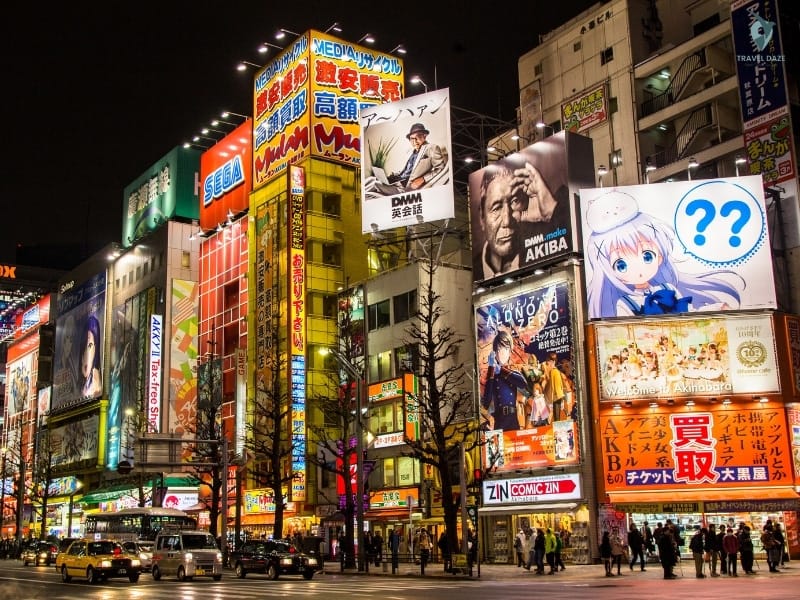I can still recall when I first learnt about the price increase in 2023. I felt a deep sadness. Even with the price increase, this pass is still my top choice for easy travel. It feels like having a special pass to travel around the country effortlessly.
Table of Contents
ToggleThe Japan Rail Pass allows you to ride JR trains, buses, and ferries as much as you want. Whether you’re taking a bullet train or checking out local lines, it makes a big difference. Say goodbye to waiting in line to purchase tickets for each journey. Simply show your pass and proceed.
Main Points
- The price increase in 2023 does not reduce the pass’s worth for easy and worry-free travel.
- You can use JR trains, buses, and ferries as much as you want.
- Select a trip duration of 7, 14, or 21 consecutive days.
- Choose between regular and eco-friendly car options for comfort.
- Bypass ticket lines and experience smooth travel with this pass.
The Japan Rail Pass is a special ticket that allows unlimited travel on most trains in Japan for a set period of time. It is designed for tourists and can be a cost-effective way to explore the country by train.
Walking through the gates of Tokyo Station with my pass felt like gaining a new level of travel freedom. It’s a ticket that allows easy travel throughout the country. This pass makes your trip easier, whether you’re taking a bullet train or a local line.
Travel freely on JR trains without limits.
This pass gives you unlimited access to 90% of the JR network. That covers fast trains, local routes, and also some buses and ferries. I recall moving through the gates easily, avoiding the long ticket lines. It’s ideal for travellers looking to make the most of their time and experience as much as they can.
It’s important to remember that while most shinkansen (bullet trains) are included, the Nozomi and Mizuho lines are not covered. I found this out the hard way when I was charged more at Kyoto Station. Always check your train again to prevent any surprises.

Regular Car Passes and Green Car Passes
Deciding between regular and eco-friendly car choices depends on what you find comfortable. Regular seats are roomy and cosy, but green cars provide 25% extra legroom. My 6’2” friend wished he had upgraded—he spent hours squeezed into a regular seat.
Green cars offer a bit of luxury, featuring wider seats and quieter interiors. If you are travelling for several days, the added comfort could be beneficial. Both choices allow you to benefit from the convenience of the pass, so it really comes down to what you prefer.
Here’s another benefit. The pass comes with unexpected extras such as the Tokyo Monorail and the Miyajima ferry, with just a small tax added. These small additions are what make the pass such a good deal.
What Is Included (And What Is Excluded)
As I planned my trip, I noticed how much easier the pass makes travelling. It includes many services, but there are some exceptions to remember. Understanding what is included and what is not can help you save both time and money.
Types of Trains: Shinkansen, Local, and Others
The pass allows you to use most trains throughout the country. This includes the well-known shinkansen (bullet trains), fast services, and local lines. I enjoyed taking a bullet train in Tokyo and reaching Kyoto in just a few hours.
However, not every shinkansen is included. The Nozomi and Mizuho trains have an additional charge. I found this out the hard way when I was billed ¥4,960 for a trip from Tokyo to Kyoto. Make sure to check your train details to prevent any surprises.

Available Buses and Ferries
The pass also covers some buses and ferries, in addition to trains. In Hiroshima, I took the loop bus to see the Peace Park and the castle—it was really helpful. The Miyajima ferry is included, except for a small tax.
But highway buses and underground systems are not included. I needed a Suica card for the tube in Kyoto. Buses in remote places, such as the Noto Peninsula, are a good option.
Exceptions such as Nozomi trains
Although the pass includes many services, there are some hidden exceptions. Some “Liner” trains need additional tickets, so be sure to check before you get on. I also discovered that four non-JR lines to remote areas, such as Aomori’s Aoimori Railway, are included.
Was hurrying to Kyoto on a Nozomi train that cost $35 a good decision? It wasn’t for me. Thinking ahead can help you save money and get the best value from your pass.
Steps to Purchase Your Japan Rail Pass
Purchasing my pass brought a blend of excitement and a little worry—what if I made a mistake? The process is simple, but there are a few important points to remember. No matter if you order online or go through a travel agent, the aim is the same: to get that golden ticket for easy travel around the country.
Buying Online vs. Travel Agents
I decided to order online, and although it was fast, I felt a moment of uncertainty. Did I really just spend $350 without getting a receipt? The confirmation email came right away. You can pre-reserve seats on the official site, which is a great advantage. Travel agents usually provide package deals that include hotels or tours. This could help you save time and money if you’re bundling.
It’s important to remember that wherever you purchase, you’ll need to swap your voucher for the real pass when you get there. This is where the true magic occurs.
How to Exchange Your Voucher in Japan
It only took 15 minutes to exchange my voucher at the Narita Airport counter. I gave my passport with the tourist stamp and the printed voucher, and just like that, I got my pass. It’s a good idea to exchange money at the airport rather than at crowded city stations like Tokyo Station. It’s quicker and easier to handle.
Keep in mind that you have three months to exchange your voucher. However, once you activate it, the start date will be fixed. I made two changes before settling on my final choice, so be sure to plan carefully. Don’t forget to bring your passport; it’s essential.
- Reserve your seats online or contact a travel agent for package deals.
- To exchange your voucher, visit the JR offices with your passport and a printed copy of your voucher.
- Activate your pass within 3 months, but be careful when picking your start date—it cannot be changed.
Using the Japan Rail Pass: A Guide
At first, navigating the system seemed difficult, but once I understood it, everything fell into place. The pass is your key to easy travel, but understanding how to use it well is what truly matters. Here’s how to excel in the process and fully enjoy your journey.
How to Reserve Seats for Free
What’s one of the greatest benefits? Seat reservations are free. I discovered this at Nagoya Station, where the English-language machines made it easy. Select your route, pick your seat, and print your ticket. It’s really simple.
Some train routes, such as those to Hokkaido and the Sunrise Izumo sleeper, need reservations to be made in advance. I booked seats for the mornings and kept the afternoons free for unexpected plans. Here’s a helpful tip: Make reservations to ensure you have space for your luggage. It’s a great advantage; I wish I had known sooner.
- Use machines that operate in English at main stations.
- Book seats for long journeys or busy periods.
- Remember to reserve luggage space if you need it.
Using Your Pass to Get Around Stations
Entering a busy station might feel overwhelming, but the pass makes everything easier. Since 2020, automatic gates allow you to enter without waiting in ticket lines. I recall my first time—I paused, thinking, “Will it take my pass?” Just a heads up: it didn’t happen.
Always double-check your train for express and limited express routes. I missed a train in Hakone and had to charm the station staff to catch the next one. Prepare in advance to prevent any issues.
- Automatic gates provide fast access.
- Check the train schedules and platforms again.
- Have your pass ready for easy transitions.
Cost of the Japan Rail Pass: Is It Worth It?
I’ve always liked working with numbers, so when I calculated the costs for my trip, the choice was obvious. Is the pass a good value for the cost? Let’s simplify it.

A 7-day pass is priced at 50,000 yen, which may seem high initially. Think about this: a round trip from Tokyo to Kyoto costs 36,000 yen. If you plan to take three or more long-distance trips, the pass will quickly cover its cost.
I saved $112 on my 2-week trip by following these steps:
- Without the pass, my trip from Tokyo to Osaka to Hiroshima and back to Tokyo would have cost 79,340 yen.
- I paid only 50,000 yen for the pass and got to travel as much as I wanted.
- I nearly chose a regional pass, but including Hokkaido in my plans made the nationwide pass a better option.
However, there are situations where the pass is not a good choice. If you are just going between Tokyo and Kyoto, you can skip it. Single tickets will cost less.
Here’s the important question: How much is your time worth? The pass makes it easy by removing the need to buy tickets for each trip. To me, that convenience was invaluable.
Are you on a tight budget? Think about night buses. They cost less, but make sure to bring a neck pillow—you’ll find it helpful!
Helpful Tips to Get the Most from Your Pass
This pass revealed beautiful paths and secret spots I never knew were there. By using some helpful tips, you can make the most of its value beyond just getting from one place to another. Here’s how to make it a golden key for amazing adventures.
Top Paths for Beautiful Scenery
Don’t overlook the coastal route from Hakata to Kagoshima. I saw a beautiful sunrise over the Pacific—totally worth getting up at 5 AM. To see views of Mount Fuji, sit on the right side of the bullet train when travelling from Tokyo to Kyoto.
Do you like mountains? Local routes such as Takayama-Shirakawago travel through valleys that you might overlook otherwise. JR buses travel along this route, offering both convenience and beautiful views.
When to Bypass the Pass
If you stay in one area, such as Kansai, a regional pass can help you save more money. I spent three days in Tokyo before I realised that the metro lines weren’t included. Here’s a helpful tip: Activate your pass during your first bullet train ride instead of at the airport.
Combo deals stand out in cities. Using the Kansai Thru Pass allowed me to access the underground in Osaka. What about rural areas? Make sure to plan ahead—I needed different bus tickets in the Japanese Alps.
- Choose the right time to activate: It’s good until midnight on the expiration day.
- Getting around in rural areas often needs additional tickets.
- Regional passes are better for specific travel plans.
Prepared to Discover Japan Without Stress?
As I stood on the platform in Hiroshima, I understood how easy travel can be. With one ticket, I travelled across the country without any concerns. Simple and straightforward—just pure adventure.
This pass includes 90% of tourist routes, ranging from lively cities to secluded valleys. Check the official calculator to find out if it works for your plans. Here’s my suggestion. Make sure to book soon—these low prices won’t last long.
Pack wisely: your passport, printed voucher, and seat confirmations. On rainy days, trade outdoor hikes for the museums in Osaka or the tea houses in Kyoto. Being flexible is important.
Your window seat to Mount Fuji is ready for you. Just take your pass and go. It’s that simple. The ability to take any train is worth every cent.
FAQ
Which trains can I take with the pass?
You have unlimited access to most JR trains, including Shinkansen (except Nozomi and Mizuho), limited express trains, local trains, and some JR buses and ferries as well.
Is the Green Car upgrade a good choice?
If you like more legroom, bigger seats, and quieter cabins, the Green Car is a good option. However, the regular pass still includes all the same routes.
Is this usable for the metro lines in Tokyo?
It only works on JR lines, not on subways or private railways. In Tokyo, JR connects important places such as Shibuya, Shinjuku, and Akihabara.
How can I reserve seats using my pass?
Simply go to any JR ticket office (Midori-no-madoguchi) and make a reservation at no cost. Booking in advance for popular routes such as Tokyo to Kyoto is a wise choice.
Should I purchase the pass before my trip?
Absolutely! You need to buy the exchange voucher outside of Japan and then exchange it for the actual pass when you arrive.
Can I receive a refund if I don’t use it?
You can get a refund before the exchange voucher is activated, but there are fees involved. After it is issued in Japan, refunds are not permitted.
Is the pass a good deal for short trips?
If you are just travelling between Tokyo and Osaka, buying individual tickets could be less expensive. The pass is great for long trips or travelling between multiple cities.






